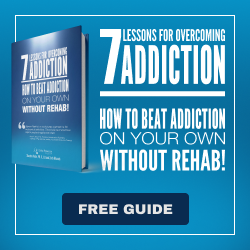Will the Internet Encourage or Combat Addiction?
What is the future of addiction and the Internet — will more people be locked in rooms alone communicating wholly electronically, increasingly with entities that may not actually be human? A European group has created an international effort to attack drug and alcohol problems through the Internet and other cutting-edge media. Stanton reviews this group’s efforts and the larger theoretical issues they must confront.
Nordisk alkohol- & narkotikatidskrift, 18(1), 2001, 114-118
Review of Telematic Drug and Alcohol Prevention: Guidelines and Experience from Prevnet Euro
Stanton Peele Morristown, NJ
How will the Internet and other communications advances impact substance abuse and addiction? Consider the impact of television and home computers. Programming on television and other media discouraging drug and alcohol use has been a media staple since drugs first became a matter of concern as a society-wide problem, as early as the 1960s. Although there have been criticisms that Hollywood did not discourage — and actually encouraged — drug use for a time, the general slant of the mass media has been anti-drug, anti-youthful drinking, and pro-Alcoholics Anonymous and pro other alcohol and drug treatment. This trend has accelerated over the last 10-15 years.
Popular television shows are filled with characters who are recovering alcoholics and addicts. Edifying tales of the descent into alcohol and drug abuse and recovery therefrom are prominent in television programming and movie fare. In movies like “Clean and Sober,” “28 Days,” “Leaving Las Vegas,” and “Permanent Midnight,” America’s leading actors (Michael Keaton, Sandra Bullock, Nicholas Cage, Ben Stiller) depict the joy of sobriety and the effectiveness of current treatment programs, along with the horror and degradation of alcoholism and drug addiction. When a television program shows a teenager consuming alcohol, the viewer knows that disaster is the inevitable result (crash, violence, alcoholism), just as earlier formal and informal film production codes guaranteed that any character committing a crime or having illicit sex must be penalized by the end of a picture.
So, obviously, young people have stopped abusing drugs and alcohol — not! It is more accurate to say that illicit drug use — although it ebbs and flows — is a regular feature of life for many older adolescents, and a majority of older adolescents in the U.K., the U.S., Australia, and many other Western nations have consumed these substances at some time. Meanwhile, a majority of older teens in many Western nations have been drunk, and substantial minorities get drunk regularly.
Anti-drug and anti-alcohol communications, then, do not directly translate into abstemious behavior by young people. Among the possible explanations for this disconnect between intention and performance are that popular media are not a good way to communicate anti-drug and anti-alcohol messages; that the particular versions of these messages that are most utilized are ineffective; that drug and alcohol use and abuse are functions of larger, less controllable social forces than media programming.
Indeed, popular media may even encourage addiction, especially when we examine substance abuse and addiction in a broader context than drug and alcohol use. For example, youthful obesity and related diseases such as atherosclerosis and acquired diabetes have created a massive assault on public health among teens in the U.S., and increasingly the rest of the Western world. Although TV and other media regularly present messages of physical fitness, a sedentary life style centered around TV and home computers, along with consumption of fast and packaged foods (advertising for which is a staple on television) create an opposing reality. In addition, the attachments many teens form to TV, computer games, and the Internet are themselves definable as addictions.
Here we see the truth to McLuhan’s “the medium is the message” — that is, the method of relating to communication media has more impact than the specific content transmitted via these media. Television viewing is a passive, consumer experience, and thus television encourages these addictogenic ways of relating to the environment. Computers and the Internet entail little physical activity, but do encourage active intellectual participation by users. As a result, although potentially stimulating, these new media continue to isolate individuals from direct contact with their environments. How will the interactive electronic media era — including having actual people at the other end of electronic messages — impact youthful outlooks and relationships, and, particularly, the susceptibility to drug and alcohol abuse and addiction?
Prevnet Euro — a five-country EU project — has pioneered an effort to analyze and to harness the role of the Internet and other telematic media (the Internet, videoconferencing, and telephone services) in preventing drug and alcohol abuse. Prevnet Euro includes five specific projects initiated in Spain, Finland, Sweden, the Netherlands, and the United Kingdom. The work of this trans-European project is summarized in Telematic Drug and Alcohol Prevention. Published in Helsinki, and edited by Tuuka Tammi and Teuvo Peltoniemi, the book suggests the dominance of a Scandinavian — and particularly a Finnish — outlook, a perhaps natural consequence of the traditional preoccupations of the Nordic countries with substance abuse and Finland’s status as a telephonic society. For example, the book notes, “there are more Internet users per capita in Scandianvian countries” than anywhere else in the world, while Southern European nations are underrepresented among Internet users.
The cross-national perspective and intentional openness of the Prevnet Euro organizers guarantees that the project considers a range of objectives. Nonetheless, the entire enterprise of “drug and alcohol prevention” might indicate certain biases. From an American standpoint — where the most obvious media anti-drug efforts are often strident and hysterical propaganda from the Partnership for a Drug-Free America and where disease conceptions of addiction are considered as indelible truths — the book is refreshingly sensible and social-psychologically oriented. For example, protective factors against substance abuse are listed as personal skills, hobbies and interests, and attention to socially or psychologically misfit or deprived youths — ideas that would fall to the left along the political-medical continuum of views on substance abuse in the U.S.
At the same time, listed as a risk factor is “starting to drink . . .at a young age” — a conception that might not be shared by many communities around Europe. The book also does not seem to know quite what to do with Web sites and organizations concerned with changing drug policy. In some places, the volume equates opponents of punitive policies with those encouraging drug use: “. . .some US sites even offer instructions on how to synthesize certain substances. . ., tips on the best situations to take drugs in, how to deal with comedowns. . . . They are often quite political and discuss current legislation etc. and some are outright advocates of legalisation. . . .” (p. 39)
As someone associated with the Lindesmith Center-Drug Policy Foundation, the leading advocate of liberalization of drug laws in the U.S., and whose own website endorses this approach, I wonder if I am perhaps being tarred here. But the range of legitimate voices in the U.S. who seek a reconsideration of current legal penalties for drug use, as well as the expansion of an international movement towards public health over criminal approaches towards illicit drug use, suggest that this text is conservative in the area of drug policy reform.
However, since this is a multi-authored volume (even sections of chapters are attributed to specific individuals — the wording in the previous paragraph coming from Benest and Ruiz of the United Kingdom Prevnet Euro project), elsewhere the harm reduction, public health approach is adequately addressed. Gregor Burkhart, of the European Monitoring Centre for Drugs and Drug Addiction (EMCDDA), in Lisbon, writes that his organization’s Demand Reduction Department catalogues efforts around Europe including, along with “preventing drug use,” also “preventing the risks and harmful consequences associated with drug use [and] helping drug users. . . .” (p. 47).
The volume (with 102 text pages) is divided into four sections — an introduction explaining “telematics” and the component Prevnet Euro participants, a general section dealing with broader issues of the relationship between the Internet and substance abuse and addiction, a section of practical aspects of designing telematic prevention efforts, and a brief section (6 pages) drawing conclusions and making recommendations for future efforts.
The first substantive chapter, subtitled “nature of telematics,” addresses critical theoretical issues including whether the Internet will have a more negative or positive impact on public health and addiction. Among these issues is that the Internet is a decentralized, largely unregulated realm in which prevention messages compete on a more or less equal basis with sites encouraging drug use — “as the control of pro-drug pages seems impossible and also incorrect.” This chapter also deals with Internet addiction as a preoccupying involvement with an activity that detracts from a person’s larger ability to function successfully.
Among the advantages of telematics for coping with addiction and substance abuse is its ready access and its anonymity. That is, even in societies noteworthy for the prevalence of psychotherapy — like the U.S. — a large majority of those with identifiable substance use and other emotional and behavioral problems will not enter treatment. Many prefer instead to consider options to which they control access, intensity of exposure, and compliance — characteristics of the Internet. In keeping with the Internet’s democratizing nature, it gives people control over their own efforts to regulate their use of drugs or alcohol — including, of course, abstaining altogether. (I recently produced, with Archie Brodsky, a document to distinguish healthy from unhealthy ways of using marijuana for a group that promotes legalization of marijuana and that previously focussed exclusively on positive aspects of the drug.)
Full utilization of telematic media’s capacities should focus on individualized and interactive efforts — taking into account the character and needs of each individual. Really, telematic prevention should mean an entirely new approach to the question of individual substance use, offering people information and skills they value and actively seek to employ in their own lives. In other words, the nature of these media may rule out the propagandistic, didactic approaches to prevention that have dominated the field. On the professional or provider side, telematic media offer unprecedented opportunities to gain feedback and data about outcomes and effectiveness. They also give professionals the chance to exchange information and for best practices to be rapidly diffused.
This whole fluid, democratic marketplace signifies a new world of prevention which few of the examples provided by Prevnet Euro can be said to have taken full advantage of. Many sites in the member countries are organized by government, temperance, religious, and anti-drug groups, whose approaches tend to be traditional and didactic. However, fuller use of the media’s capabilities are evident particularly in Finland and the Netherlands, at sites that offer fact sheets, quizzes, opportunities to seek expert and therapeutic information or options, discussion forums, etc. Of course, chances to identify and reach out to existing facilities are one opportunity provided by the Internet. But telematics obviously will quickly outpace the role of a referral service.
In Spain and elsewhere, “At the moment the use of videoconferencing systems is practically non-existent. And it actually seems to be developing more among individuals than among companies.” Just as the Internet was pioneered by nontraditionalists — one might say rebels — the same may be true of drug education. To fully utilize its capabilities, this volume, in its second substantive chapter, outlines the possibilities of the Internet in creating discussion lists, interactive informational and testing instruments, counseling options, and mass media campaigns. Web and databank design information — down to advice about page lengths, links, loading speed, marketing, monitoring visitors, sponsorship, viewer incentives — are offered, along with treatments of videoconferencing and phone services. Videoconferencing efforts are primarily on the planning board. Phone services are, on the other hand, currently so readily available that they seem far from the futuristic world of prevention that this volume presents.
Some of the conclusions of this volume, in keeping with its content, seem more forward-looking than others. “Contents (sic) must come before technology [this seems to contradict McLuhan],” “democracy and equality are long-term goals,” “the services must be innovative and give added value, e.g., invent new working procedures that would be impossible with traditional means,” “it would seem beneficial to develop ways to involve members of the target group in all stages of the concept and product development process,” “www seems to provide an opportunity to respond to young people’s need for many-sided, balanced and reliable information about drugs [including]. . . legislation and drug policy.”
Of course, one wonders whether some of these forward-looking goals are shared by all members of even the small group that comprises the existing cross-national effort represented by Prevnet Euro, let alone Eastern European nations, the U.S. Drug Czar’s office, developing-world nations (thinking especially of conservative Asian and Middle Eastern countries). Internet sites tend to reflect specific individual, organizational, and cultural biases. “It seems evident that careful localisation is necessary for some content types, notably for factual information on drugs and drug use. Other types of content, for instance ‘human feature’ stories, may be of more use if let to retain their cultural-specific features” [are these two actually opposing approaches to “localisation”?].
But is internationalization not one strong aspect of the Internet — that is, the opportunity to broaden horizons and to point out, as playwright George Bernard Shaw once noted, that it is the barbarian who “thinks that the customs of his tribe and island are the laws of nature.” The WHO/NIH Cross-Cultural Applicability Research Project, for instance, found that, contrary to expectations, even among Western European nations, fundamental aspects of substance dependence (including withdrawal and tolerance) varied in their definition and incidence from nation to nation.
The Prevnet Euro group is to be applauded for imagining and designing drug and alcohol services in a new world of Internet and related media. However, it is rare that a document can so genuinely claim to be a first step likely to be rapidly replaced — it is to be expected that a similar document written in five or ten years will describe many different aspects of the phenomenon than appear here. On the other hand, the same issues of the role of drugs and alcohol in society and the rights and obligations of the state to intrude on an individual’s consumption of these substances will continue to stimulate discussion and disagreement. Thus, whether the Internet and other interactive media will prompt or prevent drug use, will assist individuals in intelligent self-regulation of their substance use, and will accompany improved overall public health remain questions future generations are still likely to be grappling with.





